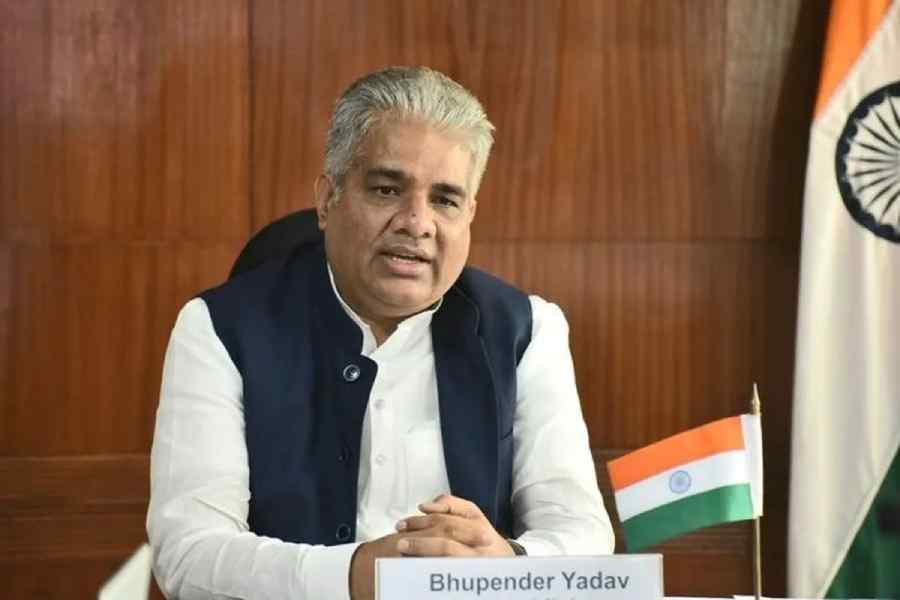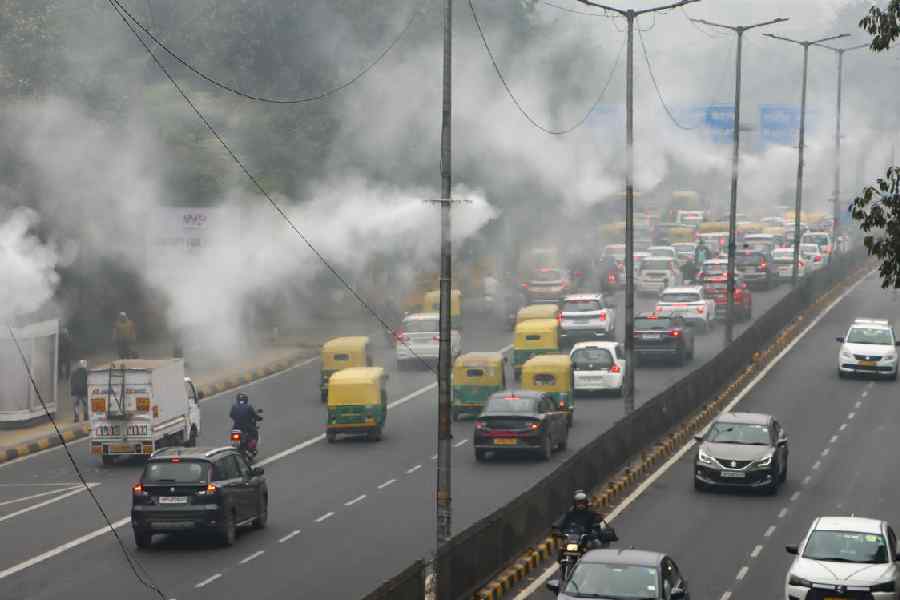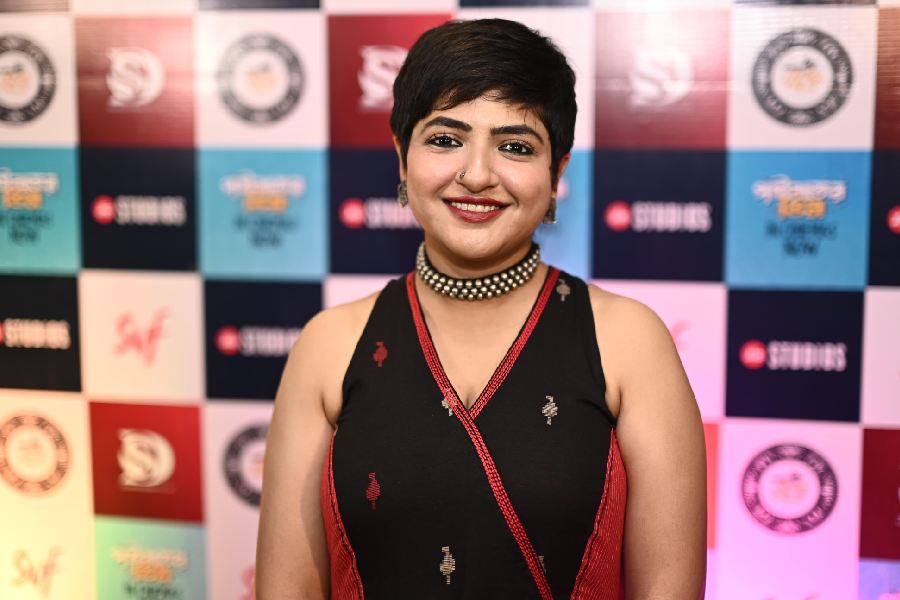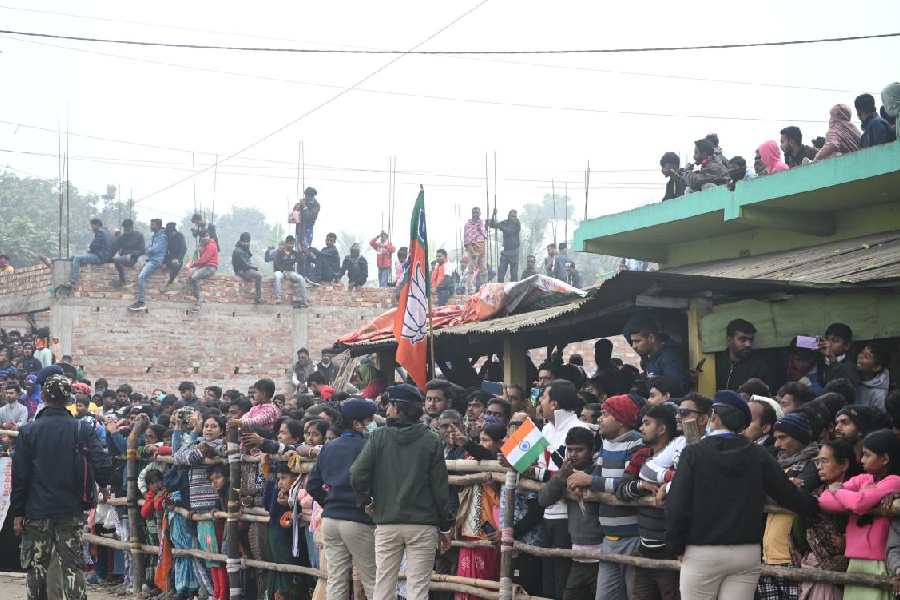 |
| Tarsillo Nataloni set the ball rolling for French cuisine by launching P’tit Bar in the capital two years ago; Pic by Jagan Negi |
The Coq au Vin, the classic chicken-in-red wine French dish, served at Chez Nini, a new French restaurant in Delhi, melts in the mouth in a blend of subtle flavours. Meanwhile, the pork belly and duck burgers are in hot demand.
In the few months since Nira Singh, computer engineer-turned-cutting-edge chef has opened Chez Nini, a 30-seater French eatery, she has won rave reviews from foodies who know their vegetable terrine from their ratatouille, and crucially also from acid-tongued food critics. Singh, an Indo-Canadian, says: “It’s familiar, soulful French food. The mantra is fuss-free cooking — one that’s devoid of attitude.”
Once upon a time the only question to be asked about French restaurants in India was: would they shut down before you could say bouillabaisse consommé? But now our French connection is strengthening by the forkful and chefs with a taste for French ‘home-style’ cooking are turning out everything from fondues to rib steaks.
 |
| The Floating Island Le Cirque with berries and créme anglaise is one of chef Mickey Bhoite’s (below) signature dishes at Le Cirque, The Leela Palace New Delhi; Pic by Jagan Negi |
 |
Now you have about 11 upscale French restaurants in the capital and several more are shining the cutlery and aim to open before the year is out. Mumbai (it has the popular Café Chez Moi), Bangalore and Calcutta too are digging into French fare with gusto.
The fact is that today’s Indian diners are tuning in to global tastes. Rara Avis is a French bistro-style restaurant that sprawls over two floors in Delhi’s Greater Kailash II market and exudes a very French feel. The terrace, which is thrown open at night, aims to look like a French café complete with wooden tables and metal chairs —though it does also have a live kitchen.
The creation of two Frenchmen — Laurent Guiraud and Jerome Cousin — Rara Avis is fast becoming a haunt for lovers of duck, pork and rabbit dishes. Says Guiraud: “It’s inexpensive comfort food just like our grandmothers would cook it.”
“A few years ago French food didn’t stand a chance since it was up against the robust north Indian staple diet of roti-dal, rajma-chawal, or kebabs and whisky,” smiles Tarsillo Nataloni, the Italian chef and owner of two hugely popular restaurants in Delhi — one French, the P’tit Bar, and the other Italian, Flavours.
When Nataloni set the ball rolling for French cuisine by launching P’tit Bar in 2010, his target was Delhi’s expatriate French community. Nataloni says: “The response was amazing right from the beginning.” Fondue bourguignonne (that’s meats impaled on forks, cooked in oil at the table and dipped in sauces) and côte de boeuf (rib steak) are his specialty. “And kidneys, heart, tongue too,” he says.
 |
| French classics like the Vegetarian Salade Nicoise are hotsellers at Nira Singh’s (below) Chez Nini |
 |
Now that his Indian clientele has grown by leaps and bounds, it’s not surprising that Nataloni has another bistro lined up to open in the French Cultural Center, in Delhi.
Riding on this wave of French popularity, restaurateur A.D. Singh of the Olive Bar & Kitchen fame and business partner, Naïna de Bois-Juzan, are hopping onto the bistro bandwagon. “The Indian diner is looking for authentic French tastes,” says A. D. Singh.
Naïna, who is half Indian and half French, says that their traditional French bistro will open later this year. One of the main ideas behind the restaurant is that much of the food served will come from their organic fruit and vegetable farm on the outskirts of Delhi. She says: “The idea is to use only the products from our farm and live up to the ‘from the farm to the plate’ tag.”
GIVE THEM FRENCH
Shaun Kenworthy, chef and restaurant consultant, adds that hoteliers are no longer playing it safe with multi-cuisine restaurants that aim to please all by offering something for everyone.
“People’s attitudes towards food have changed very rapidly over the last two or three years,” he says. Kenworthy ran the French restaurant Blue Potato in Calcutta for two years before he had to shut it down because he couldn’t get a liquor licence.
 |
| Rara Avis run by Frenchmen Laurent Guiraud (right) and Jerome Cousin is fast becoming a haunt for lovers of dishes made from duck, pork and rabbit ; Pic by Jagan Negi |
Some chefs say they were worried about Indians taking to French cuisine but these doubts were quickly laid to rest. Mickey Bhoite, chef de cuisine, Le Cirque, The Leela Palace New Delhi, said he’d been warned that guests were bound to demand spicy chicken and pasta. But they surprised him. “Our guests know what they want — most have eaten at Le Cirque in New York — and know their dishes well.” Today, Bhoite sells about seven kilos of foie gras a week and his tasting menus are a big hit.
It also helps that chefs are highly trained in the subtle nuances of French cuisine. Vishal Atreya, executive sous chef, The Imperial New Delhi, says: “Today chefs know as much about French cuisine as a French person would.”
Nira Singh, for instance, is surefooted on French-Canadian flavours as she studied to be a chef from Montreal’s French Culinary School. Jerome Cousin and Laurent Guiraud have grown up in Paris. Naïna too has lived in Paris.
Nataloni for his part is as comfortable designing French menus at P’tit Bar as going Italian at Flavours. Just before landing in India he had spent nine years working in France. “So my affinity with French cuisine has deep roots,” he says.
WHAT’S COOKING
Since French cuisine hinges on high-quality ingredients, the chefs are pulling out all the stops to ensure their dishes use top range produce. So establishments like Le Cirque, the 1911 Brasserie at The Imperial in Delhi and the oldest player in the business, Orient Express at the Taj Palace Hotel, Delhi, are flying in even their potatoes, onions, garlic and tomatoes from across the world. Chicken, asparagus, white truffles, exotic vegetables, meats, cheeses, foie gras — you name it — are also imported.
 |
| Chef Vishal Atreya (below) of The Imperial says that the traditional pepper steak is one of the popular dishes at Nostalgia at 1911 Brasserie ; Pic by Jagan Negi |
 |
But chefs are giving a miss to French exotica like snails, frog’s legs and sea urchins. But you can expect plenty of octopus, scallops, duck and goose liver and rabbit on your plate. Says restaurateur Sudha Kuckreja: “One man’s exotic food is another’s nightmare. To sell snails in India would be a challenge.”
But what’s working in favour of the French restaurants, Kuckreja says, is the fact that dishes are being cooked the home-style way and that there’s plenty for vegetarians.
The highpoint of a French meal at Nostalgia at 1911 Brasserie is that the main course is cooked on a trolley by your table. “The guests enjoy the flambés, the smoked Scottish salmon and the lobster thermidors being cooked before their eyes,” says Atreya. A meal (including a starter, soup, main course and dessert) for one here costs between Rs 2,500 and Rs 3,000.
Bhoite’s signature dish at Le Cirque is the double cooked mozzarella caprese — a flavourful tomato tartare (sauce) with extra virgin olive oil and tomato basil foam. A three-course meal for two at Le Cirque costs Rs 8,000 (minus beverages).
Encouraged by the response, Le Cirque recently launched a Saturday brunch — with a heaving table of 50 to 60 dishes on offer.
French cuisine’s newest India outing also isn’t just about sauces, butter and cream dishes so normally associated with classic French cuisine. Chefs insist that they are offering lighter, simpler French dishes.
Nira Singh’s intensely flavourful French onion soup served with rye bread layered with grated cheese is a winner at Chez Nini and other hits include salade Nicoise, sole fish pinwheel and chicken ballotine. “I try and make the dishes healthful by not using too much cream but stay true to the essence of the dish,” says Singh. A three-course meal here is priced at Rs 2,000 per head.
 |
| Chef Sujan Mukherjee (below) replaces cream with yoghurt sauce in his Pan-seared Quinoa Crêpes ; Pic by Subhendu Chaki |
 |
Unsurprisingly everyone is rejigging dishes to make them lighter and healthier. At Chambers, at Taj Bengal, executive chef Sujan Mukherjee says light ingredients along with smaller portions and relishes are the order of the day. Cream, meanwhile, is being replaced by fruit bases.
His signature crepes — he calls them Pan-seared Quinoa Crêpes — have spinach, pine-nuts, Greek feta and yoghurt sauce rather than a cream-based sauce. “Overall, there’s less oil and therefore fewer calories,” says Mukherjee.
One great survivor that is still thriving is the Orient Express at Delhi’s Taj Palace which has been dishing out European fare — with an emphasis on French dishes —ever since the hotel opened in 1984. But the 4-course meal here that cost a princely Rs 150 per head 26 years ago is now priced at Rs 4,950.
 |
| Chef D.N. Sharma of Orient Express at Taj Palace Hotel rustles up French delights like lamb chops with eggplant tortellini ; Pic by Jagan Negi |
 |
Chef D.N. Sharma, senior sous chef, Orient Express, notes that heavy creams, butter and sauces are hard to stomach in the Indian heat. Sharma says that the dishes that survived through the years include Camembert cheese soufflé, smoked Scottish salmon, foie gras and warm chocolate pudding.
What is it that has always made French cuisine so special? Says Nataloni: “Great technique, great produce, a lot of time — and of course great passion.”











